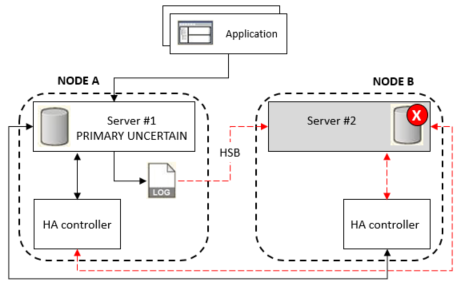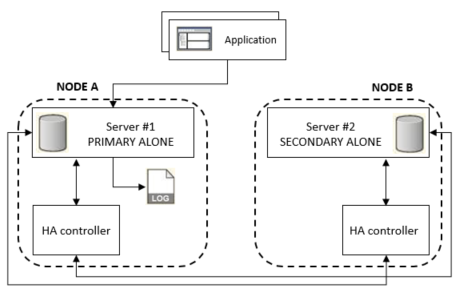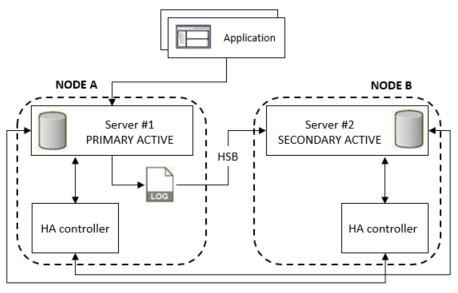|
Description
|
Illustration
|
|---|---|
|
The primary server (Server #1) fails to connect to the secondary server (Server #2).
Server #1 switches to PRIMARY UNCERTAIN state automatically and suspends any open transactions, neither committing them nor rolling them back (no error or success message is sent to the client.
Note If the HotStandby.AutoPrimaryAlone parameter is enabled, Server #1 immediately switches to PRIMARY ALONE state, see next step.
|
 |
|
The HAC instance on Node A concludes that the secondary server has failed and (if Server #1 was set to PRIMARY UNCERTAIN state) the HAC switches Server #1 to PRIMARY ALONE state.
Server #1 commits any open transactions but saves all transactions in the transaction log, in case they have not been committed by Server #2.
Server #1 continues to accept new transactions from applications.
At the same time, the HAC instance on Node B restarts Server #2 in SECONDARY ALONE state.
Note If Node B failed rather than just Server #2, Node B and the HAC instance on Node B must be restarted before the HAC instance can restart Server #2.
|
 |
|
The HAC instance on Node A connects the primary and secondary servers.
Server #2 reads the transaction log from Server #1 and checks whether any of the transactions are duplicates (that is, transactions that the secondary server already committed). Any transactions that are not duplicates are executed on Server #2.
Note If the HAC cannot connect the servers, the HAC can be configured to initiate a netcopy operation to synchronize Server #1 with Server #2.
|
 |